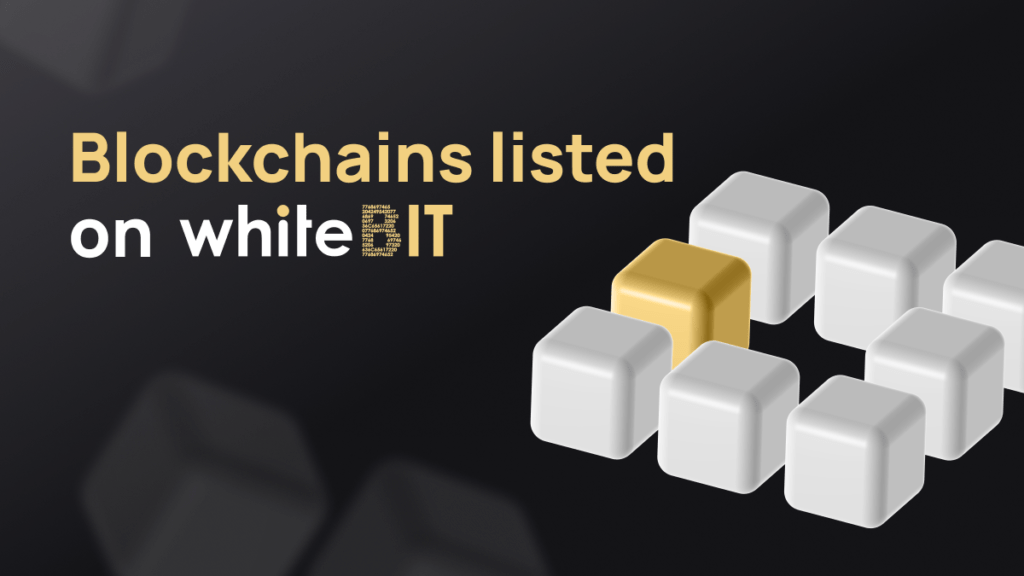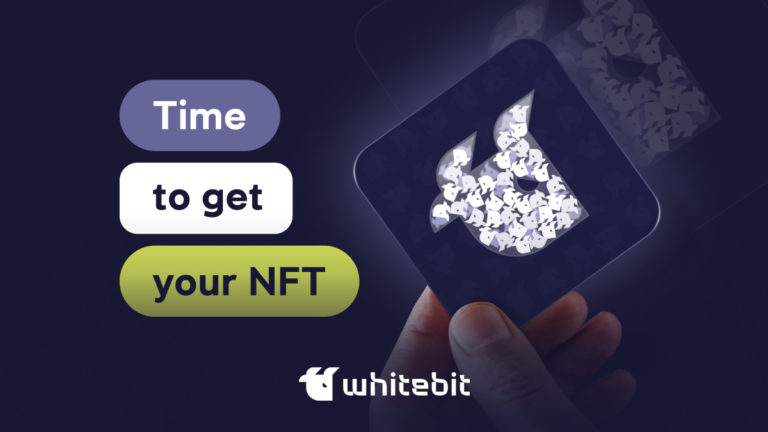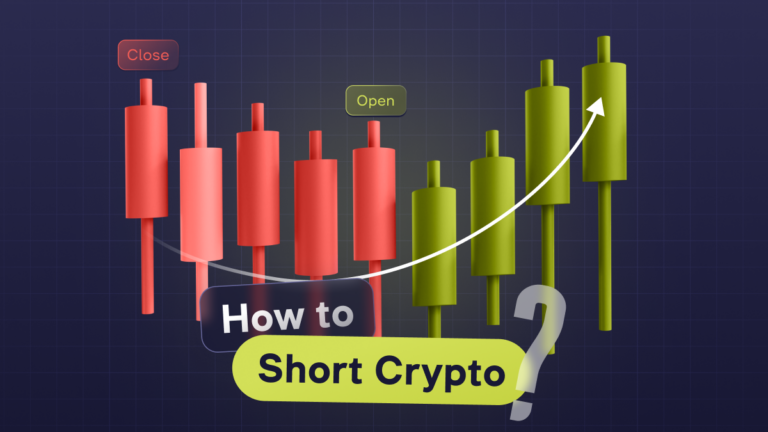What blockchains can be found on WhiteBIT?

Content
Blockchain is a data register that contains all information about the transactions carried out within the network. All transaction data remains registered and cannot be changed. Bitcoin is the most famous blockchain nowadays. The technologies, however, do not stand still, and the emergence of alternatives is pretty natural.
Let’s look at the characteristics of the cryptocurrencies that you can find on our exchange. Here’s what you should pay attention to when considering a particular blockchain:
- The consensus algorithm is a mechanism used to achieve agreement on the principles of operation within the network.
- Emission refers to how quickly new coins are released.
- Transaction fees.
You can find information about the deposit and withdrawal fees, as well as the amount of the minimum deposit and the minimum withdrawal amount, on the Fees page.
BTC
Bitcoin is the world’s first cryptocurrency, whose blockchain has become the gold standard for various projects operating nowadays. However, low transaction speed caused by the quantitative growth of transactions is one of the main problems that Bitcoin enthusiasts face. A distinctive feature of Bitcoin is that the network is decentralized; no authorities can make serious decisions about the network optimization fast. It is done by the community of users who store, sell, mine, and buy cryptocurrency, thereby ensuring the network’s life.
Consensus algorithm: Proof-of-Work
Emission: max. supply of 21 mln BTC
WhiteBIT minimum deposit: 0.0005 BTC
WhiteBIT withdrawal fee: 0.0004 BTC
Buy Bitcoin — BTC/USDT
ETH
Ethereum is the second most popular blockchain, designed to implement projects based on smart contracts. The invention of smart contracts is a revolutionary step towards introducing blockchain technologies to the world of finance and other areas of everyday life. Thanks to smart contracts, it became possible to create Ethereum-based applications that work according to clear general rules, without the risk of large-scale failures and fraud.
Consensus algorithm: Proof-of-Work, with a perspective to change to PoS
Emission: unlimited
WhiteBIT minimum deposit: 0.01 ETH
WhiteBIT withdrawal fee: 0.004 ETH
Buy ETH — ETH/USDT
XRP
Unlike Ethereum, the blockchain code of XRP was written from scratch at the request of venture capital funds. It was created to increase speed and reduce transaction fees. XPR is considered one of the fastest cryptocurrencies. The platform can process up to 1,500 transactions per second, while for BTC, it equals 7-10, and for ETH — 35 transactions.
Consensus algorithm: Ripple Protocol consensus algorithm
Emission: max. supply of 100 bln XRP.
WhiteBIT minimum deposit: 1 XRP
WhiteBIT withdrawal fee: 0.25 XRP
Buy XRP — XRP/USDT
XLM
Stellar is a direct competitor to the Ripple blockchain, which aims to become the main decentralized payment system. The idea behind Stellar is to create bridges through which it will be easier for users to deposit and withdraw funds. In this case, the cryptocurrency will be used to pay the fees, as well as the “bridge” for converting one currency into another.
Consensus algorithm: Stellar Consensus Protocol
Emission: max. supply of 50 001 806 812 XLM.
WhiteBIT minimum deposit: 10 XLM
WhiteBIT withdrawal fee: 0.2 XLM
Buy XLM — XLM/USDT
TRX
The TRON blockchain is another popular platform for launching and implementing DApps based on smart contracts. The project encourages content creators to use their platform as a basis for innovative projects and ideas. TRX throughput is relatively high and equals 2000 transactions per second.
Consensus algorithm: Delegated Proof-of-Stake
Emission: max. supply of 100 bln TRX
WhiteBIT minimum deposit: 50 TRX
WhiteBIT withdrawal fee: 1 TRX
Buy TRX — TRX/USDT
NEO
At its launch in China, NEO was the first public blockchain, positioning itself as the start of a new era of the Internet economy. A distinctive feature of the blockchain is the presence of two own tokens — NEO and GAS. The first one is an investment token; its holders can participate in voting on crucial technical changes. GAS is used to pay transaction fees.
Consensus algorithm: Delegated Byzantine Fault Tolerance
Emission: max. supply of 100 mln NEO.
WhiteBIT minimum deposit: 1 NEO
WhiteBIT withdrawal fee: 0
Buy NEO — NEO/USDT
EOS
EOS is a platform that supports DApps and issues its own cryptocurrency. The blockchain architecture is designed for vertical and horizontal scaling of decentralized applications. Only 10% of EOS tokens are distributed among developers through smart contracts for a period of 10 years. In addition, storing EOS tokens gives users a share of the network’s traffic capacity.
Consensus algorithm: Delegated Proof-of-Stake (DPoS)
Emission: max. supply of 1 bln EOS.
WhiteBIT minimum deposit: 1 EOS
WhiteBIT withdrawal fee: 0.5 EOS
Buy EOS — EOS/USDT
WAVES
Waves is an open-source blockchain platform that supports DApps and smart contracts. The project aims to optimize early blockchains, create a universal multipurpose blockchain, and unite various business audiences. It seeks to maintain simplicity and ease of use, promotes the introduction of blockchain technologies into the daily life of users. After the update, two types of smart contracts became available: smart accounts and smart assets.
Consensus algorithm: Leased Proof-of-Stake (LPoS)
Emission: max. supply of 1 mln WAVES.
WhiteBIT minimum deposit: 1 WAVES
WhiteBIT withdrawal fee: 0.005 WAVES
Buy WAVES — WAVES/USDT
XMR
Monero blockchain is distinguished by the ability to carry out anonymous transactions. Users can receive and transfer cryptocurrency anonymously while maintaining their privacy as much as possible. Ring signatures and hidden addresses ensure the anonymity of the network.
Consensus algorithm: Proof-of-Work RandomX
Emission: unlimited
WhiteBIT minimum deposit: 0.01 XMR
WhiteBIT withdrawal fee: 0.005 XMR
Buy XMR — XMR/USDT
DOT
Polkadot is a multi-blockchain that brings together multiple blockchains “under one roof” to improve scalability and other weak spots of traditional blockchains. The project aims to change the Internet structure to Web3, where independent blockchains will exchange information within Polkadot. One of the main goals of the project is to remove system-wide updates and hard forks.
Consensus algorithm: Nominated Proof-of-Stake
Emission: max supply of 1 bln DOT (after denomination)
WhiteBIT minimum deposit: 1.06 DOT
WhiteBIT withdrawal fee: 0.2 DOT
Buy DOT — DOT/USDT
ICX
ICON focuses on improving the interoperability of blockchain technologies. Independent blockchains like Bitcoin and Ethereum can exchange information seamlessly with the ICON protocol while maintaining their complete autonomy. The ICON network operates on a patented loopchain mechanism and provides the ability to process hundreds of transactions per second.
Consensus algorithm: LFT (Loop Fault Tolerant)
Emission: unlimited
WhiteBIT minimum deposit: 12.5 ICX
WhiteBIT withdrawal fee: 2.5 ICX
Buy ICX — ICX/USDT
XTZ
Tezos is a blockchain created to exchange assets and implement projects based on smart contracts. Its distinctive feature is the ability to carry out updates without hard forks. Due to this fact, the blockchain can adapt to changing technological conditions. The developers update the code, and the stakeholders support or reject a proposed change by voting.
Consensus algorithm: Delegated Proof-of-Stake
Emission: unlimited
WhiteBIT minimum deposit: 1.65 XTZ
WhiteBIT withdrawal fee: 0.35 XTZ
Buy XTZ — XTZ/USDT
KSM
Kusama has a purpose similar to Polkadot’s; it focuses on the interoperability and scalability of blockchains. The blockchain stands out for its low entry threshold for parachains and low requirements for validators. The network is decentralized, which allows anyone who owns KSM or parachain tokens to bring forward administrative changes.
Consensus algorithm: Nominated Proof-of-Stake
Emission: unlimited
WhiteBIT minimum deposit: 0.015 KSM
WhiteBIT withdrawal fee: 0.0025 KSM
Buy KSM — KSM/USDT
DASH
DASH is a blockchain-based decentralized payment system allowing anonymous transactions. DASH payments are confidential; you just need to know the wallet address.
Consensus algorithm: Proof-of-Work, X11
Emission: max. supply of 18,900,000 DASH.
WhiteBIT minimum deposit: 0.025 DASH
WhiteBIT withdrawal fee: 0.002 DASH
Buy DASH — DASH/USDT
LTC
Litecoin is another fork of Bitcoin, a peer-to-peer payment system, and a cryptocurrency. The main difference between LTC and BTC is the speed of block creation. For LTC, it takes only 2.5 minutes to create a block.
Consensus algorithm: Proof-of-Work
Emission: max. supply of 84 mln LTC.
WhiteBIT minimum deposit: 0.01 LTC
WhiteBIT withdrawal fee: 0.001 LTC
Buy LTC — LTC/USDT
BCH
Bitcoin Cash is the most famous alternative to traditional Bitcoin, which appeared in 2017 simultaneously with the BTC update. BCH is more reminiscent of the original version of the BTC code since the information about transactions within the network is still recorded in the blockchain. The block size has changed from 1 MB to 8 MB, then to 32 MB, which increased the speed of transactions.
Consensus algorithm: Proof-of-Work
Emission: max. supply of 21 000 000 BCH.
WhiteBIT minimum deposit: 0.015 BCH
WhiteBIT withdrawal fee: 0.0035 BCH
Buy BCH — BCH/USDT
BSV
Bitcoin SV (Satoshi’s Version) is a Bitcoin Cash hard fork that arose as a result of arguments over BCH technical upgrades. BSV was released with an even larger block size of 128 MB.
Consensus algorithm: Proof-of-Work
Emission: max. supply of 21 000 000 BSV.
WhiteBIT minimum deposit: 0.03 BSV
WhiteBIT withdrawal fee: 0.006 BSV
ZEC
Zcash is a cryptocurrency that focuses on anonymity and privacy. ZEC transactions are carried out in two ways: transparent and secure. In the first case, the transaction is carried out traditionally between open addresses and is recorded in the public register. When performing secure transactions, the addresses and the amount are not disclosed in the register.
Consensus algorithm: Proof-of-Work with a perspective to change to PoS
Emission: max. supply of 21 000 000 ZEC.
WhiteBIT minimum deposit: 0.04 ZEC
WhiteBIT withdrawal fee: 0.01 ZEC
Buy ZEC — ZEC/USDT
DOGE
The popular cryptocurrency meme Dogecoin is a fork of Luckycoin, which is a fork of Litecoin. The cryptocurrency differs from Bitcoin in terms of mining and block generation time.
Consensus algorithm: Proof-of-Work
Emission: unlimited
WhiteBIT minimum deposit: 15 DOGE
WhiteBIT withdrawal fee: 5 DOGE
Buy DOGE — DOGE/USDT
ETC
Ethereum Classic is a fork of Ethereum (ETH) that has sought to differentiate itself from the updated network since its launch. The main goal of ETC is to keep the blockchain’s characteristics as they were before the network hack in 2016. Ethereum Classic (ETC) does not plan to move to PoS, unlike Ethereum (ETH).
Consensus algorithm: Proof-of-Work
Emission: unlimited
WhiteBIT minimum deposit: 0.4 ETC
WhiteBIT withdrawal fee: 0.01 ETC
Buy ETC — ETC/USDT
BNB
Binance Coin is a cryptocurrency originally issued with the ERC-20 protocol on the Ethereum network. In 2019, ERC-20 BNB was exchanged for BEP2 BNB and is not based on Ethereum anymore. The coins are used as a means of payment and a way to pay commissions on the Binance exchange.
Consensus algorithm: Proof of Staked Authority
Emission: max. supply of 200 BNB
WhiteBIT minimum deposit: 0.01 BNB
WhiteBIT withdrawal fee: 0.002 BNB
Buy BNB — BNB/USDT








